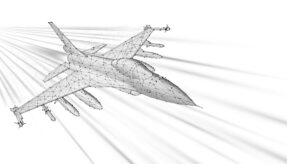
Patriot One Technologies wholly-owned subsidiary Xtract Technologies (“Xtract AI”) is collaborating with Amazon Web Services (AWS), Vancouver General Hospital (VGH), the University of British Columbia (UBC), and SapienML among others in the development of an Artificial Intelligence (AI) solution to help radiologists identify the increased risk of the COVID-19 virus.
The project is being led by Dr Savvas Nicolaou and Dr William Parker and is supported by the UBC Community Health and Wellbeing Cloud Innovation Center (UBC-CIC), powered by Amazon Web Services (AWS).
The UBC-CIC’s mission is to: solve real-world challenges that materially benefit British Columbia, Canada and the world, by engaging and collaborating with stakeholders in Community Health and Wellbeing innovation challenges and make the solutions available open source globally. Additional support for the project is being provided by the Vancouver Coastal Health Research Institute (VCHRI).
Data is being used from CT and X-ray scans obtained from around the world, with annotations from a group of 14 radiologists volunteering their time. The annotators are labelling the images to segment them into three classes: background, normal lung, and Ground Glass Opacity (GGO). The percentage of lung volume affected by GGO is a leading indicator for COVID-19, and the development of an automated approach to assess this can greatly assist medical practitioners to quickly diagnose early onset of the virus.
Using these labeled images, the Xtract AI team is training innovative 3D residual networks, a particular style of AI algorithm, to automatically identify GGO volumes in the lungs and compare them with the total volume of the lungs. The ratio of affected lung, and thereby an indicator for COVID-19, in new patients can then be calculated from analyzing CT and X-ray images of their lungs. The team will continue to improve the model as more data becomes available, with the aim of achieving greater than 90% diagnostic accuracy.
“AI models are not magic, but this model we’ve developed is an open source gift to start answering questions” said Dr. William Parker, who is leading the project, and is a radiology resident at UBC. “If we are going to get to the point of helping patients, we need to know the strengths and weaknesses of the models, and we need to have an understanding that not all models are created equal. The goal of our AI model is to drive feedback so that we can improve the model and make it available for clinical use in the fall of 2020.”
The model has been released under an open source license, to be shared with health care facilities worldwide to help early diagnosis of COVID-19 patients.
Martin Cronin, CEO of Patriot One Technologies said: “This is an incredibly important project, which we are proud to be a collaborator on, and we hope that our team and technology can provide a meaningful addition to the ongoing efforts to minimise COVID-19’s impact on the world.”
If you would like to join our community and read more articles like this then please click here.







